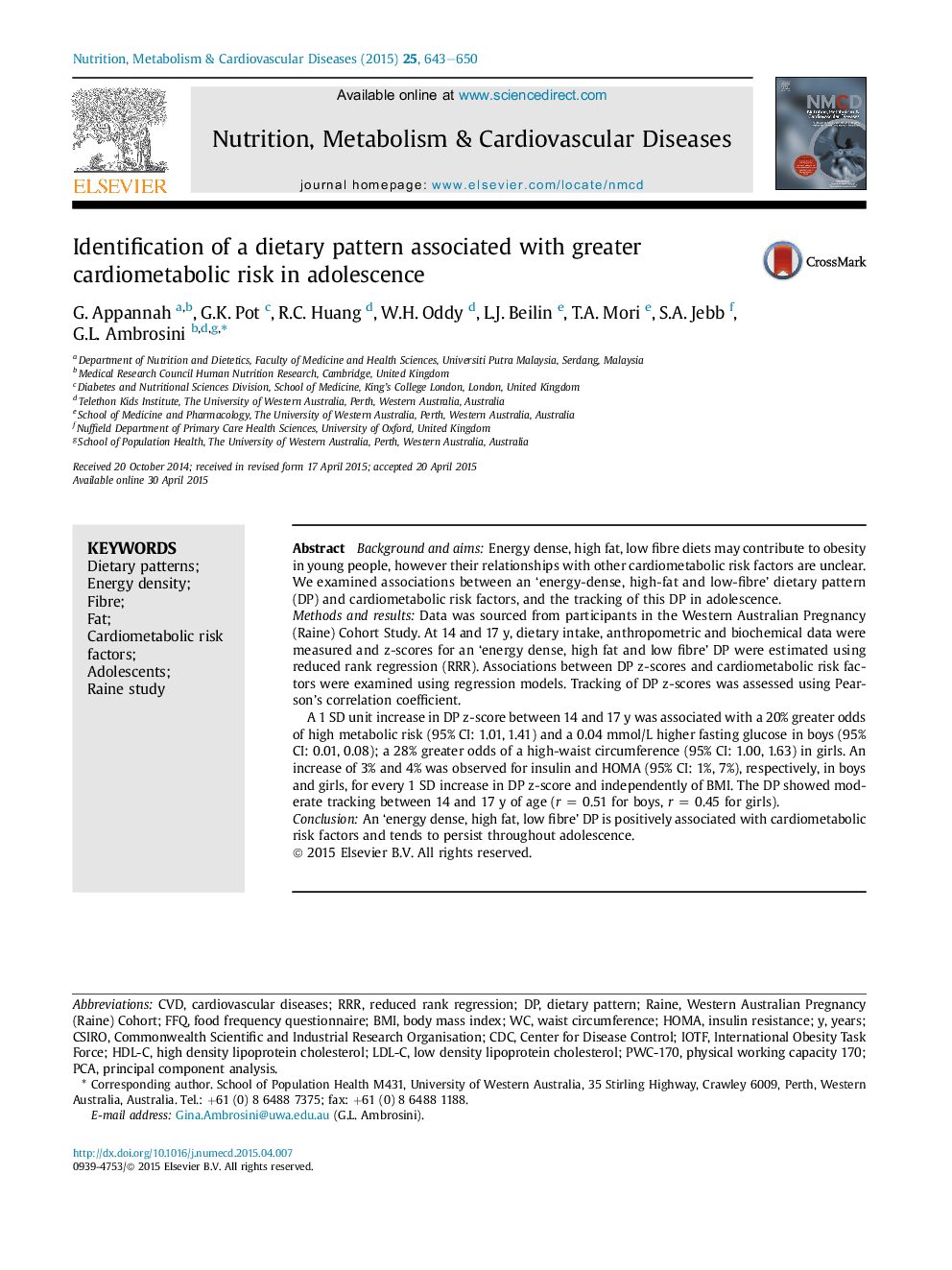| کد مقاله | کد نشریه | سال انتشار | مقاله انگلیسی | نسخه تمام متن |
|---|---|---|---|---|
| 5996397 | 1180663 | 2015 | 8 صفحه PDF | دانلود رایگان |
- Relatively little is known about diet and the early development of cardiometabolic risk factors in young people.
- Few studies have examined how dietary patterns track during childhood.
- An energy-dense, high fat, low fibre dietary pattern is associated with poorer cardiometabolic health in adolescence.
- This type of dietary pattern tracks moderately during adolescence.
- The early establishment of healthy eating habits appears important for reducing later cardiometabolic risk.
Background and aimsEnergy dense, high fat, low fibre diets may contribute to obesity in young people, however their relationships with other cardiometabolic risk factors are unclear. We examined associations between an 'energy-dense, high-fat and low-fibre' dietary pattern (DP) and cardiometabolic risk factors, and the tracking of this DP in adolescence.Methods and resultsData was sourced from participants in the Western Australian Pregnancy (Raine) Cohort Study. At 14 and 17 y, dietary intake, anthropometric and biochemical data were measured and z-scores for an 'energy dense, high fat and low fibre' DP were estimated using reduced rank regression (RRR). Associations between DP z-scores and cardiometabolic risk factors were examined using regression models. Tracking of DP z-scores was assessed using Pearson's correlation coefficient.A 1 SD unit increase in DP z-score between 14 and 17 y was associated with a 20% greater odds of high metabolic risk (95% CI: 1.01, 1.41) and a 0.04 mmol/L higher fasting glucose in boys (95% CI: 0.01, 0.08); a 28% greater odds of a high-waist circumference (95% CI: 1.00, 1.63) in girls. An increase of 3% and 4% was observed for insulin and HOMA (95% CI: 1%, 7%), respectively, in boys and girls, for every 1 SD increase in DP z-score and independently of BMI. The DP showed moderate tracking between 14 and 17 y of age (r = 0.51 for boys, r = 0.45 for girls).ConclusionAn 'energy dense, high fat, low fibre' DP is positively associated with cardiometabolic risk factors and tends to persist throughout adolescence.
Journal: Nutrition, Metabolism and Cardiovascular Diseases - Volume 25, Issue 7, July 2015, Pages 643-650
